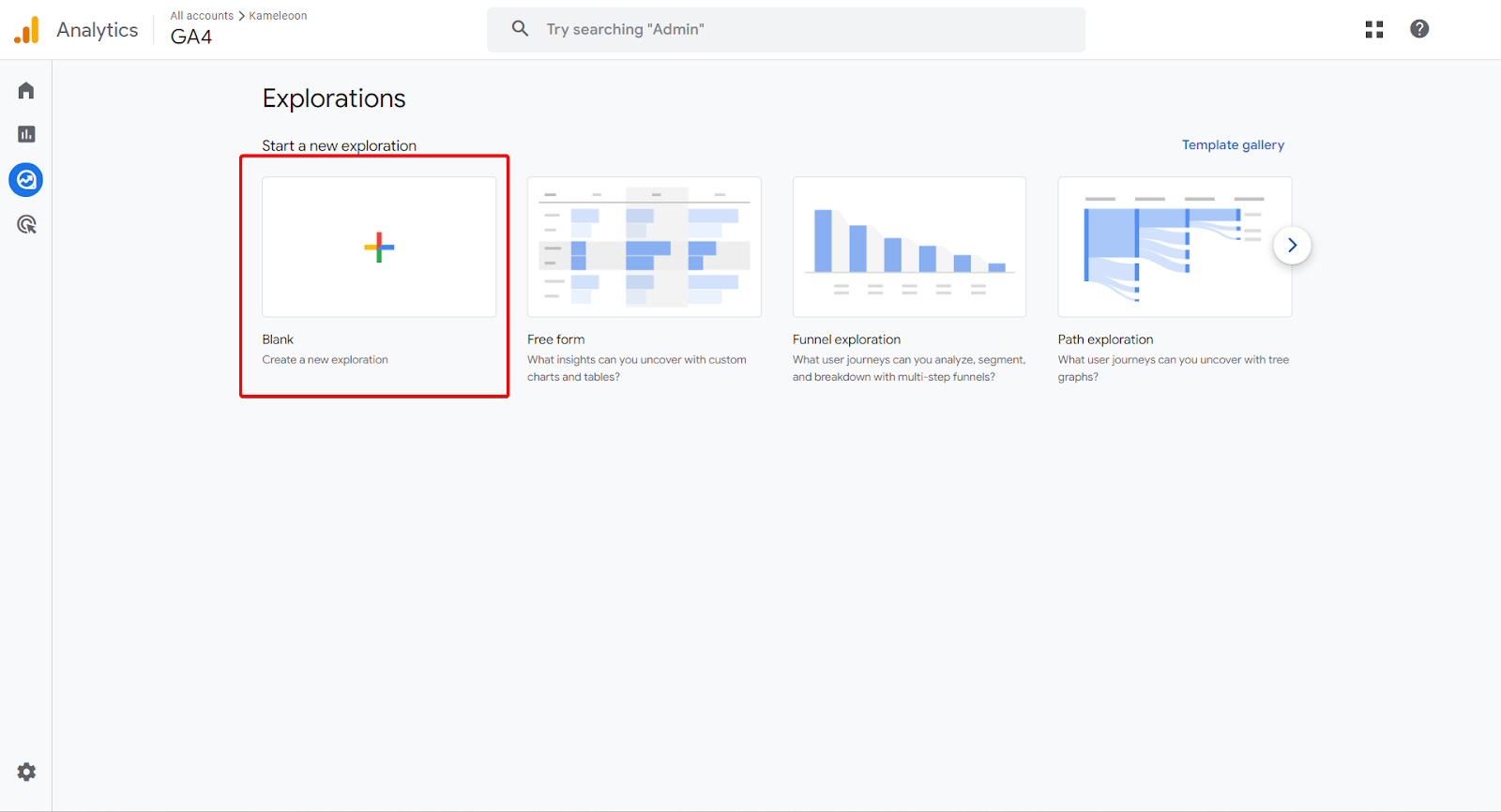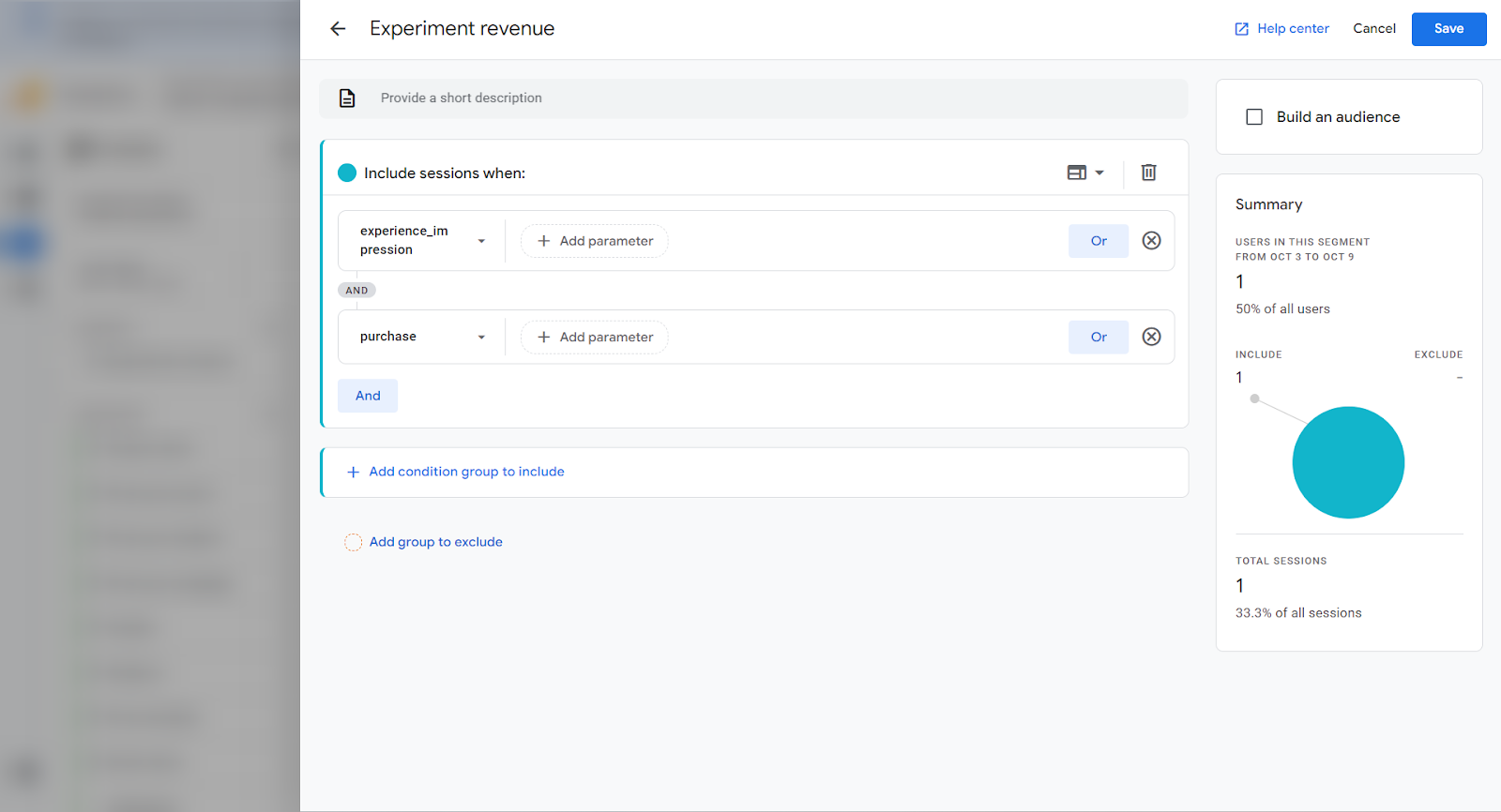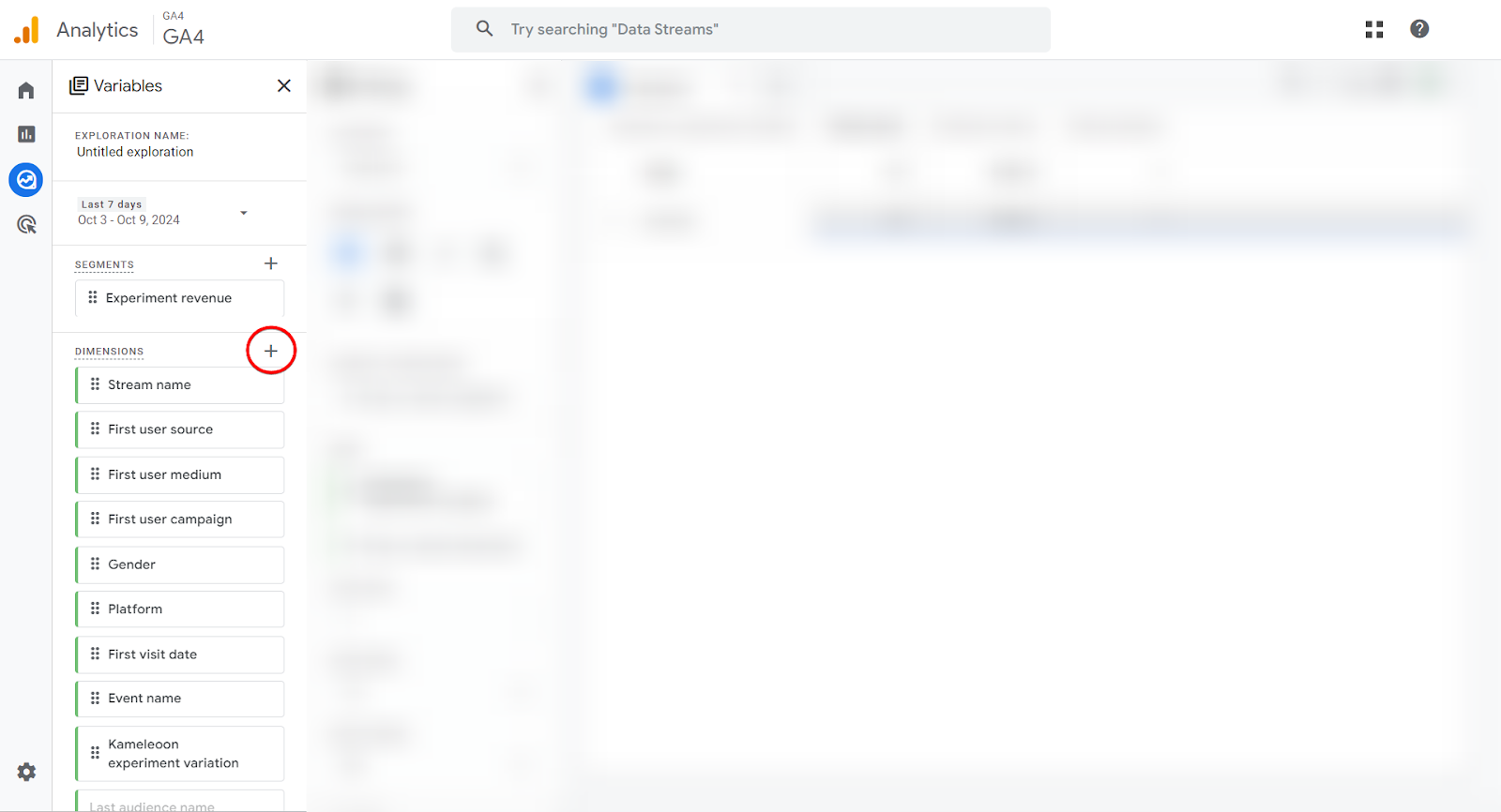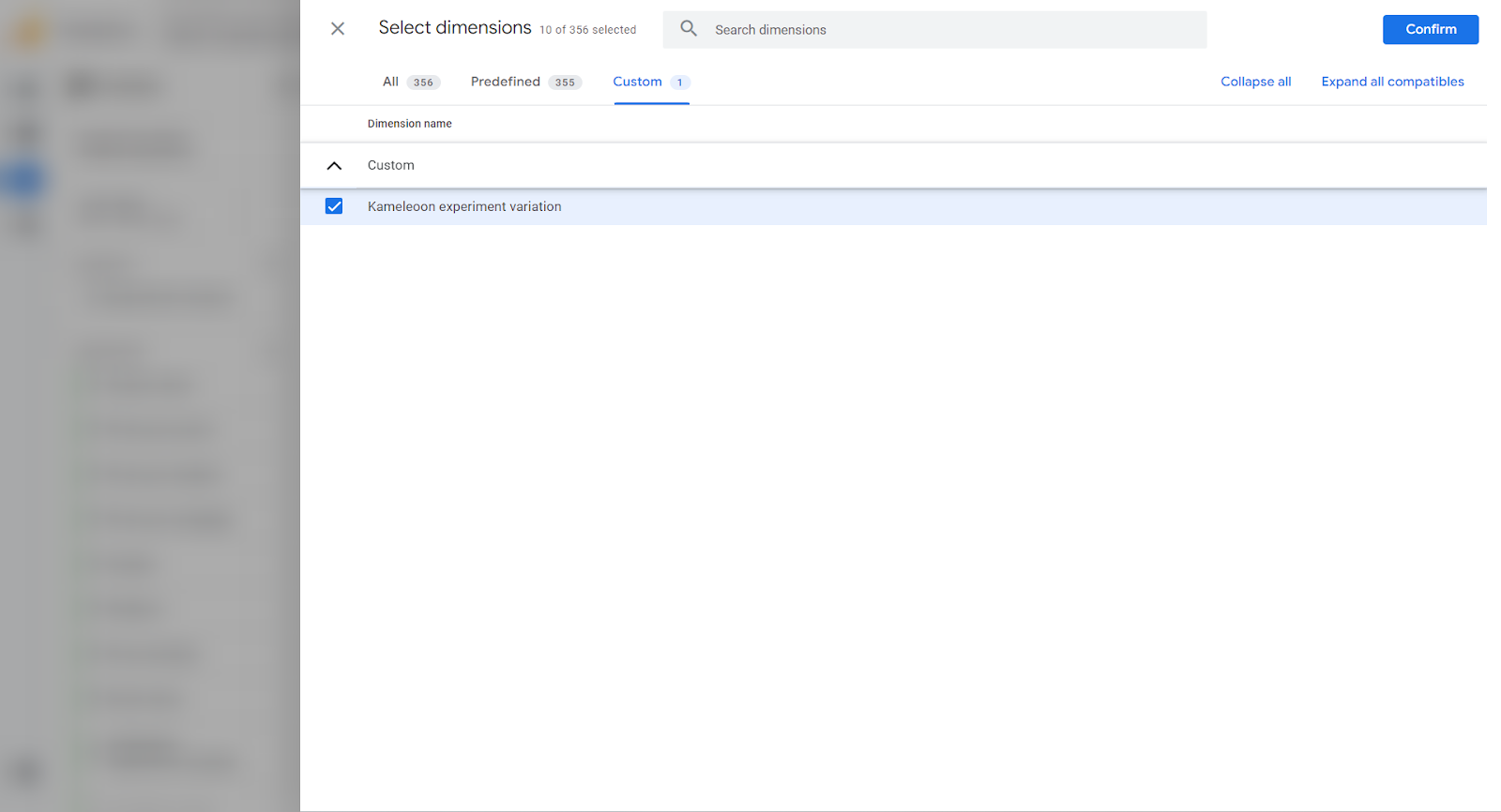Google Analytics 4 Explorations
To enhance your ability to measure and analyze experiment results using Google Analytics 4 (GA4), Kameleoon's integration offers a streamlined approach. This guide walks you through enabling the integration, setting up custom dimensions, and creating Explorations to visualize key data insights.
Step 1: Enable the integration in Kameleoon
Enable the integration in Kameleoon and ensure your events are correctly transmitted. You must accumulate enough data and wait 24 hours maximum for GA4 to process events, allowing you to see the data when creating a segment or custom dimension.
Step 2: Create a custom dimension
You must create a custom dimension to break down data for each variation. To create a custom dimension, follow the steps documented here.
You can use the following values:
- Dimension name: Kameleoon experiment variation
- Scope: Select Event to create an event-scoped custom dimension.
- Description: The variation of a Kameleoon experiment
- Event parameter:
exp_variant_string
Step 3: Create an Exploration
To access Explorations, click Explore in the left sidebar, then create a new blank Exploration.

Step 4: Create a new segment
In your exploration, create a new segment.

In this example, we will create a session segment that will select all sessions where an experiment has been triggered, and a conversion has occurred. To do so, select Session segment, and give it a name.

Include sessions when the experience_impression and purchase events have been triggered.
Segment users without relying on a conversion event
If you want to analyze experiment participation when no conversion event occurred, you can create a custom segment based solely on the experiment and variation identifiers. You have two options:
- Option 1 (recommended for simplicity): Use the
exp_variant_stringparameter (for example,KAM-174084) in combination with theexperience_impressionevent. Set your condition toexp_variant_string contains KAM-<expID>-<varID>. - Option 2 (more granular): Use
kameleoon_experiment_idandkam_variation_idas two distinct filters and set Condition scoping to Within the same event. This setup ensures both values are matched together on the same interaction.
Below are a couple of examples:


These approaches are useful for measuring exposure to a variation independently of outcome metrics such as revenue or conversions.
Step 5: Add your Custom Dimension
Now, you must add your Custom Dimension in your Exploration. To do so:
- Click + next to Dimensions.

- In the Custom tab, select Kameleoon experiment variation and click Confirm.

Step 6: Set up your Free form
In Settings, select the following values:
- Technique: Free form
- Visualization: Table
- Rows: Kameleoon experiment variation
- Values:
- Event count
- Purchase revenue
- Total purchasers
You should have the following table:

If you have collected enough data, you should have your variations listed in the Kameleoon experiment variation column, instead of (not set).